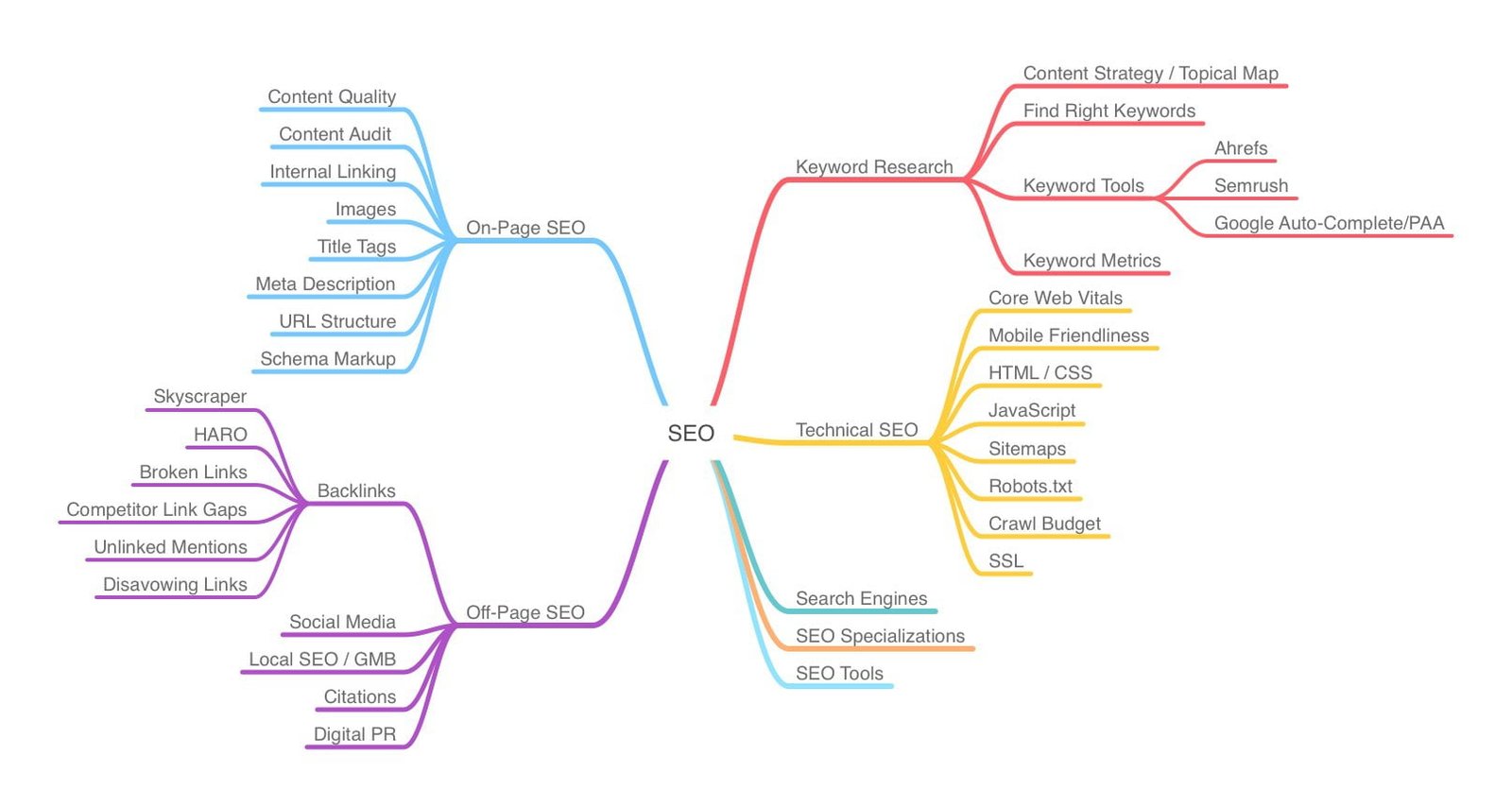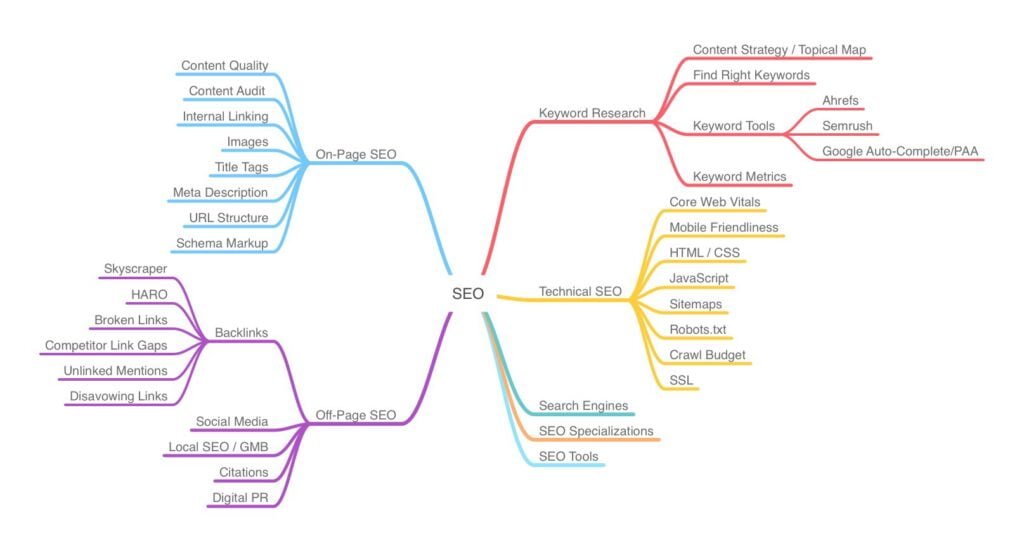Address
Suncity P&T Colony, Rajendra Nagar, Hyderabad.
Work Hours
Monday to Friday: 9 Am - 4 Pm EST
Saturday: 10 Am - 2 Pm EST
Address
Suncity P&T Colony, Rajendra Nagar, Hyderabad.
Work Hours
Monday to Friday: 9 Am - 4 Pm EST
Saturday: 10 Am - 2 Pm EST


Keyword clustering is the process of organizing keywords into relevant categories or themes. This technique helps businesses to group keywords that have similar meanings and contexts, making it easier for them to create content that is optimized for multiple keywords.
Keyword clustering is a crucial aspect of search engine optimization (SEO) that can help businesses improve their online visibility, reach a wider audience, and drive more organic traffic to their website. By grouping keywords into relevant categories, businesses can ensure that their content is optimized for multiple keywords, making it more relevant to both their target audience and search engines.
In this article, we will discuss the basics of keyword clustering and its importance in SEO. We will also go over the benefits of using keyword clustering and provide a step-by-step guide on how to implement it in your content creation process. Additionally, we will provide examples of successful keyword clustering to help illustrate the power of this technique.
By the end of this article, you will have a better understanding of how keyword clustering can help improve your SEO efforts and drive more organic traffic to your website.
A Closer Look at Keyword Grouping and Its Benefits
Keyword clustering is the process of grouping related keywords together based on their meaning and context. This technique helps businesses to optimize their content for multiple keywords, making it more relevant to both their target audience and search engines.
Keyword clustering has a number of benefits for businesses looking to improve their SEO efforts. Some of the key benefits include:
Improved online visibility: By grouping keywords into relevant categories, businesses can ensure that their content is optimized for multiple keywords, making it more relevant to search engines.
Wider audience reach: By optimizing for multiple keywords, businesses can reach a wider audience, as their content will be more discoverable to users who are searching for related keywords.
Increased organic traffic: By optimizing for multiple keywords, businesses can drive more organic traffic to their website, as users will be able to find their content more easily through search engines.
Keyword clustering differs from traditional keyword research in a number of ways. Traditional keyword research is focused on finding the best keywords to target based on search volume and competition, while keyword clustering is focused on grouping related keywords together based on their meaning and context.
Keyword clustering is often confused with topic clustering, which is the process of grouping topics together based on their relevancy. While both techniques are similar in some ways, keyword clustering is focused on optimizing content for multiple keywords, while topic clustering is focused on grouping related topics together.
To determine the right keywords to cluster, it’s important to consider the following factors:
By following these guidelines, you can determine the right keywords to cluster and optimize your content for multiple keywords, helping to improve your SEO efforts and drive more organic traffic to your website.
Creating a keyword cluster is a simple process that can be broken down into the following steps:
Keyword research tools are an essential tool for creating a keyword cluster. They help you identify potential keywords to target based on search volume, competition, and relevance to your business. Some of the key features to look for in a keyword research tool include:
Once you have a list of potential keywords, the next step is to group them into themes based on their relevancy and meaning. To do this, you should consider the following steps:
Once you have grouped your keywords into themes, the next step is to prioritize them based on search volume, competition, and relevance to your business. To do this, you should consider the following steps:
By following these steps, you can prioritize your keywords and focus on optimizing your content for the keywords that will have the greatest impact on your SEO efforts.
Once you have created a keyword cluster, the next step is to use it in your content creation efforts. To do this, you should consider the following steps:
Here are some examples of how you can use keyword clusters in different types of content:
Optimizing your content using keyword clusters is a simple process that involves the following steps:
Tracking and measuring the success of your keyword clustering efforts is an essential step in determining the effectiveness of your SEO strategy. To do this, you should consider the following steps:
By tracking and measuring the success of your keyword clustering efforts, you can identify areas for improvement and make changes to your SEO strategy as needed to achieve better results.
In this section, we will recap the key takeaways from the article and emphasize the significance of keyword clustering in SEO.
A. Recap of the Importance of Keyword Clustering in Content Optimization: Keyword clustering is a crucial aspect of SEO that helps you organize your keywords into groups based on their themes. This practice makes it easier for you to create content that is optimized for search engines and provides value to your audience.
B. Benefits of Using Keyword Clustering: Keyword clustering can help you save time, improve the relevance of your content, and increase your website’s visibility. By grouping your keywords into themes, you can create content that is optimized for specific search terms, making it easier for your target audience to find your website.
C. Final Thoughts on Keyword Clustering and its Impact on SEO: Keyword clustering is an essential tool for any SEO strategy. By creating keyword clusters, you can improve the relevance of your content and increase your website’s visibility. If you haven’t yet started using keyword clustering, it’s time to start.
D. Encouragement to Implement Keyword Clustering in Your SEO Strategy: Implementing keyword clustering in your SEO strategy is a simple and effective way to improve your website’s visibility and attract more traffic. Whether you’re just starting out or you’re an experienced SEO professional, incorporating keyword clustering into your strategy can help you achieve your goals and grow your online presence.
In this section, we will provide a list of sources used in the article to support the information presented and give credit to the authors and websites that have contributed to the article’s content.
A. List of Sources Used in the Article:
It’s important to note that while these sources were used in the article, they are not the only sources of information on the topic of keyword clustering. There are many other resources available that can provide additional insights and perspectives.
Comments are closed.
[…] too many keywords in the title tag can hurt your website’s ranking and make your content appear spammy. Avoid […]